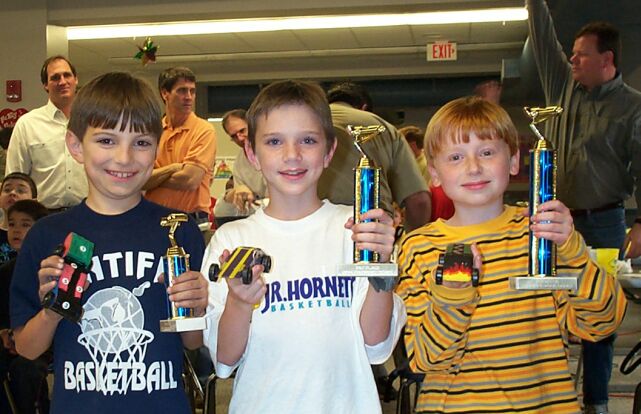Another one of my favorite stations at Conclave 2010 was fly tying. When I approached this activity the first thing that caught my attention wasn't the fly tying, but instead it was the intense focus of the participants. Unlike other stations that had more action involvement, the fly tying had these folks brains in full gear. It was a joy just to watch that focus between the eyes and hands as their small fly creations gradually transformed into works of art.
After several minutes I couldn't stand it any more and just when one of the instructors of the fly-tying wanna-be's invited me to take a seat and give it a try. That's all it took and I was off to doing something with my hands that I'd never before experienced and something that I hadn't planned to do.
I was a little skeptical at first and a bit hesitant, perhaps because I've always just picked up my flies and lures at the bait shop when I hit the lake or streams. And besides, I was completely absorbed with just watching the intense focus of the other participants. That was reward enough for me but now I had to shift my brain from observer to participant, from teacher to student.
My coach guided me step-by-step through the process and my eyes were so focused on the small hook clamped securely in the little vise. When you're tying a fly I learned about the intense concentration that is required to get it right so I had little opportunity to look my instructor in her eyes. Perhaps it was also just the "fumble and bumbe" that any new student has when learning to do something new with their hands. It was sort of awkward being in the students chair when I was more comfortable being the teacher so I had to make other adjustments too.
 After about 15 minutes of patient personal instruction I gleamed with pride after completing my first fly. I was so excited that I now didn't want to leave the station and I proudly walked around showing off my fly to other onlookers.
After about 15 minutes of patient personal instruction I gleamed with pride after completing my first fly. I was so excited that I now didn't want to leave the station and I proudly walked around showing off my fly to other onlookers.Now, I must admit that it's going to be another monumental task for me to pluck that fly from my hat because I just want to show it off. Perhaps I will make another one to actually go for the big one, but I have a feeling that this fly-made with my own hands- is going to be on that hat for a very long time.





























































